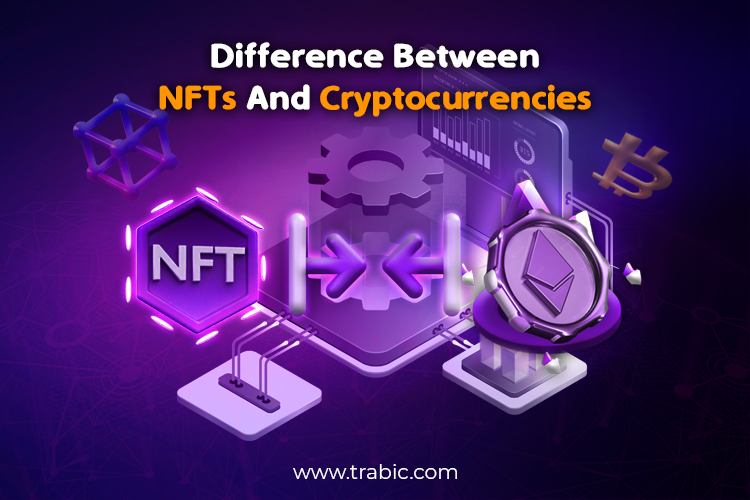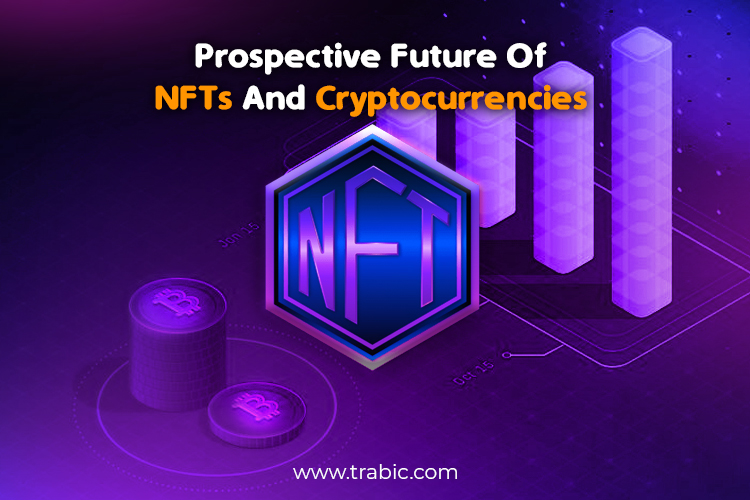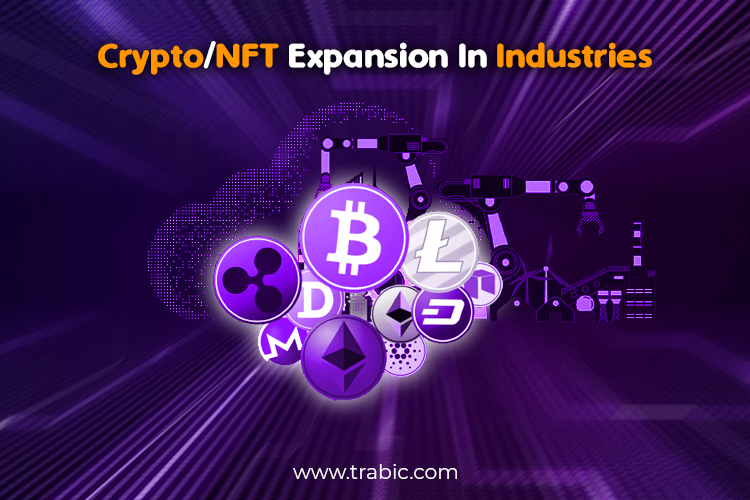NFTs (Non-Fungible Tokens) and cryptocurrencies have significantly increased popularity and adoption in recent years. The global cryptocurrency market capitalization reached an all-time high of over $2.5 trillion in May 2021, up from just $15 billion in early 2017 (CoinMarketCap). Bitcoin, the first and largest cryptocurrency, has seen a significant increase in price since its inception in 2009, reaching an all-time high of over $64,000 in April 2021 (CoinGecko).
Ethereum, the second-largest cryptocurrency, has grown significantly, reaching an all-time high of over $4,300 in May 2021 (CoinGecko). The global NFT market reached a total trading volume of $10.7 billion in the first half of 2021, up from just $13.7 million in the first half of 2017 (DappRadar). The largest NFT marketplace, OpenSea, reported a trading volume of over $1.5 billion in August 2021, up from just $8 million in January 2021 (Dune Analytics). These statistics demonstrate the significant growth and adoption of NFTs and cryptocurrencies recently.
However, it is integral to document that these markets can be volatile and subject to fluctuations based on market sentiment and regulatory developments. NFTs (Non-Fungible Tokens) have obtained significant attention in the past year as a new digital asset that allows ownership and authenticity of unique digital items, such as art, music, and other collectibles. While NFTs have seen a surge in popularity and high-profile sales, the market remains volatile, and there is no guarantee that this trend will continue in the long term.
Cryptocurrencies, such as Bitcoin and Ethereum, have also seen significant price fluctuations and gained attention from investors and the general public. The adoption of cryptocurrencies as an expense technique by significant companies like Tesla and PayPal has increased their visibility and potential mainstream use. However, cryptocurrencies remain speculative investments, and their value can fluctuate significantly based on market sentiment and regulatory developments.
Explaining the difference between NFTs and cryptocurrencies
NFTs (Non-Fungible Tokens) and cryptocurrencies are digital assets with different purposes and characteristics. Cryptocurrencies, like Bitcoin and Ethereum, are digital currencies that use blockchain technology to enable secure and decentralized transactions without a central authority. They are fungible, meaning each cryptocurrency unit is interchangeable with any other unit of the same type and value. Cryptocurrencies are used as an exchange medium, a value store, and a speculative investment.
On the other hand, NFTs are unique digital assets that represent ownership of a particular item, such as artwork, music, or video content. They use blockchain technology to enable secure ownership and transfer of digital assets, providing authenticity and provenance to the item. NFTs are non-fungible, meaning each NFT is unique and cannot be replaced by another NFT of the same type and value. NFTs are primarily used for collecting and trading rare and unique digital items. Cryptocurrencies are fungible digital currencies used as a medium of trade, a store of worth, and a speculative investment.
At the same time, NFTs are unique digital assets representing ownership of a particular item and are primarily used for collecting and trading rare and unique digital items. NFTs (Non-Fungible Tokens) and cryptocurrencies are significant for several reasons. NFTs and cryptocurrencies are built on decentralized blockchain technology, allowing for secure and transparent transactions without intermediaries such as financial institutions or banks.

NFTs, give a new way of owning and trading unique digital assets, providing authenticity and provenance to digital items such as artwork, music, and video content. Cryptocurrencies have the potential to revolutionize traditional finance by enabling faster and cheaper cross-border transactions and creating new forms of financial products and services. Both NFTs and cryptocurrencies have been seen as speculative investments with the potential for significant returns in a relatively short period. This has led to many investors and traders participating in these markets.
NFTs and cryptocurrencies have created passionate and engaged communities, with artists, creators, and enthusiasts exploring new ways of creating and distributing digital content and new forms of collaboration and social interaction. Cryptocurrencies and blockchain technology can provide financial services to unbanked and underbanked populations and create more transparent and equitable systems for resource allocation and governance. NFTs and cryptocurrencies are significant for their potential to disrupt traditional systems, drive innovation and investment, build communities, and create positive social impact.
However, it is essential to remember that these technologies are still evolving and can be subject to risks and challenges, such as market volatility, regulatory issues, and environmental concerns.
What will be the prospective future of NFTs and Cryptocurrencies in 2023?
The future of NFTs and cryptocurrencies will depend on various factors, including technological advancements, adoption by mainstream businesses and consumers, regulatory changes, and overall market trends. After conducting thorough research and seeking professional advice, it is essential to remember that investing in these assets can be risky and should be done cautiously. In 2023, NFTs and cryptocurrencies will likely continue gaining popularity and mainstream acceptance, especially as more industries and sectors explore their potential applications. Here are some potential developments:

Increased adoption in the art world
The art world has witnessed a significant shift in how art is perceived and sold, thanks to the emergence of Non-Fungible Tokens (NFTs) and cryptocurrencies. As we look toward the future, it is clear that the adoption of these technologies will only continue to grow, shaping the way we view and value art.
NFTs are unique digital assets. NFTs are stored on a blockchain, providing proof of ownership and authenticity. The use of NFTs in art has opened up new possibilities for artists, collectors, and investors alike. By leveraging NFTs, artists can create one-of-a-kind digital artworks that cannot be duplicated. This has created a new digital art market, allowing work monetization to artists in a way that was not possible before.
Cryptocurrencies, conversely, are decentralized digital currencies that use cryptography for security. These currencies have already disrupted traditional finance and are now making their way into the art world. Cryptocurrencies offer a way for artists and collectors to transact more efficiently and securely. With cryptocurrencies, transactions can be completed quickly and without intermediaries.
The adoption of NFTs and cryptocurrencies in art is still early, but the potential benefits are clear. For artists, using NFTs can provide a new source of income and help protect their intellectual property. For collectors and investors, NFTs and cryptocurrencies offer a way to invest in art more securely and transparently.
Looking ahead to 2023, it is clear that the adoption of NFTs and cryptocurrencies in the art world will continue to increase. As more artists and collectors become familiar with these technologies, we expect to see a proliferation of digital art and a growing market for NFTs. Furthermore, as more people become comfortable with cryptocurrencies, we can speculate to see an increase in the number of transactions in this space.
NFTs have already significantly impacted the art world, and this movement will likely persist in 2023. More artists and collectors will likely embrace NFTs to buy and sell digital art, with some traditional art marketplaces also involved. Increased adoption of NFTs in the art world is a potential development in 2023. NFTs have already disrupted the art world by enabling digital art to be sold as unique, one-of-a-kind items, and this trend is likely to continue.
NFTs allow artists to monetize their digital works and earn royalties whenever their art is sold or resold, providing a new revenue stream for artists who struggle to make money from their digital creations. This also provides collectors a new way to invest in art and profit from future sales.
In 2023, more established artists and galleries may embrace NFTs to reach a wider audience and experiment with new digital art forms. Traditional art marketplaces may also incorporate NFTs into their platforms to cater to the growing demand for digital art.
However, there may also be some challenges to the increased adoption of NFTs in the art world, such as the environmental impact of the blockchain technology used to create and sell NFTs, the possibility for deception and scams, and the need for more excellent education and understanding of NFTs among artists, collectors, and the wider public.
Expansion into other industries
NFTs are not limited to art and can be applied to many other areas, such as gaming, sports, music, and more. In 2023, we may see more industries exploring the potential of NFTs, including using NFTs for ticketing and event management, product authentication, and more. Expansion into other industries is a potential development of NFTs and cryptocurrencies in 2023. While NFTs have accumulated substantial attention in art, they can also bring revolution in other industries.
One potential area for expansion is the music industry. As discussed earlier, NFTs can sell exclusive content and merchandise, offer unique experiences to fans, and create new revenue streams for musicians and creators. This trend will likely continue in 2023, and we may see more musicians and music labels embrace NFTs to engage with their fans and monetize their work.
Another potential area for expansion is the gaming industry. NFTs can create unique in-game items and assets that can be purchased and marketed on the blockchain, giving players actual ownership and control over their virtual possessions. In 2023, more gaming companies may adopt NFTs to enhance the player experience and create new revenue streams.
Beyond these industries, NFTs and cryptocurrencies may also be adopted in other areas, such as sports, fashion, and real estate. For example, sports teams could sell NFTs to commemorate special events or milestones, fashion brands could create limited-edition NFTs for high-end clothing items, and real estate developers could use NFTs to sell unique pieces of property. However, like with any new technology or innovation, there may also be challenges and regulatory hurdles to overcome as NFTs and cryptocurrencies expand into other industries.

NFTs have transformed the art industry, enabling artists to tokenize and sell their digital creations as unique assets. However, their potential extends far beyond finance and art. In this essay, we will explore the prospective future of NFTs and cryptocurrencies in other industries, such as gaming, music, and sports.
Gaming:
Gaming is a multibillion-dollar industry constantly evolving, with new technologies and trends emerging regularly. One such trend is the integration of NFTs and cryptocurrencies into games. NFTs can create distinctive in-game items, such as skins, weapons, and in-game characters, which can be bought, sold, and traded on blockchain marketplaces. This enhances players’ gaming experience and offers a new revenue stream for game developers.
Music:
The music industry is another sector that could benefit from the integration of NFTs and cryptocurrencies. Artists receive a small fraction of the revenue from streaming services such as Apple Music and Spotify. By tokenizing their music as NFTs, artists can sell it directly to their fans, cutting out the middlemen and earning more revenue. Cryptocurrencies can facilitate micropayments, allowing fans to support their favorite artists with small donations.
Sports:
In the sports industry, NFTs and cryptocurrencies can create unique fan experiences. For example, NFTs can create limited edition tickets, which can be sold to fans as collectible items. Cryptocurrencies can also facilitate betting and prediction markets, creating an innovative way for fans to engage with their favorite sports teams and players.
Increased regulatory oversight
As cryptocurrencies and NFTs continue to gain popularity, we may see increased regulatory oversight to ensure compliance with laws and regulations. Governments worldwide are already exploring the regulation of cryptocurrencies and NFTs, and this trend is likely to continue in 2023. increased regulatory oversight is a potential development of NFTs and cryptocurrencies in 2023.
As NFTs and cryptocurrencies become more widespread and mainstream, governments, and regulatory bodies may look closer at how these technologies are used and their potential risks. One potential area of regulation is taxation. As NFTs and cryptocurrencies continue to be used as investment vehicles, governments may look to implement new rules and regulations around how they are taxed. This could include changes to capital gains tax rules or introducing new taxes on NFT and cryptocurrency transactions.
Another potential area of regulation is in the area of consumer protection. As discussed earlier, some risks are associated with NFTs and cryptocurrencies, such as fraud and scams. Governments may look to implement new regulations to protect consumers and ensure that unscrupulous actors do not take advantage of them. In addition, there may be regulations around the environmental impact of NFTs and cryptocurrencies, particularly the energy consumption associated with blockchain technology. Some governments and regulatory bodies may push for adopting more sustainable practices and technologies in the NFT and cryptocurrency space.
Overall, increased regulatory oversight could help create a more stable and trustworthy environment for NFTs and cryptocurrencies, leading to greater adoption and integration into mainstream industries. However, there is also a risk that excessive regulation could suppress innovation and limit the potential of these technologies to disrupt and transform industries.
Continued volatility
Cryptocurrencies, including those used to purchase NFTs, have been known to experience significant price fluctuations, and this movement is likely to persist in 2023. Investors and buyers of NFTs should be prepared for the potential risks and rewards associated with cryptocurrencies.
Continued volatility is a potential development of NFTs and cryptocurrencies in 2023. As we have seen in recent years, the prices of cryptocurrencies and NFTs can be highly volatile, with sharp rises and falls in value. This can make it difficult for investors and collectors to predict the future value of their assets and may discourage some from entering the market. Several factors could contribute to continued volatility in the NFT and cryptocurrency markets. One is the potential for regulatory changes or crackdowns, which could significantly impact market sentiment and the perceived value of these assets.
Another factor is the emergence of new technologies and competitors. While NFTs and cryptocurrencies have garnered a lot of attention in recent years, there is always the possibility that new technologies or Crypto Marketing platforms could emerge that challenge their dominance. This could lead to a shift in market dynamics and further volatility. Finally, global economic and political conditions could contribute to continued volatility in the NFT and cryptocurrency markets. Uncertainty and instability in other markets, such as the stock market or real estate market, could lead investors to seek alternative assets like NFTs and cryptocurrencies, driving up demand and prices.
However, any sudden changes in global economic or political conditions could also lead to a downturn in the market. While continued volatility may present challenges for investors and collectors, it is also a characteristic of emerging markets and technologies. As these markets and technologies mature, we may see more excellent stability and predictability in the value of NFTs and cryptocurrencies.
NFTs and cryptocurrencies will continue to shape and transform various industries in the coming years, with new applications and use cases emerging. As with any emerging technology, there may be challenges and uncertainties, but the potential benefits of NFTs and cryptocurrencies are significant and likely to play an essential role in the future digital economy.
The future of NFTs and cryptocurrencies will depend on various factors, including technological advancements, adoption by mainstream businesses and consumers, regulatory changes, and overall market trends. After conducting thorough research and seeking professional advice, it is essential to remember that investing in these assets can be risky and should be done cautiously.
